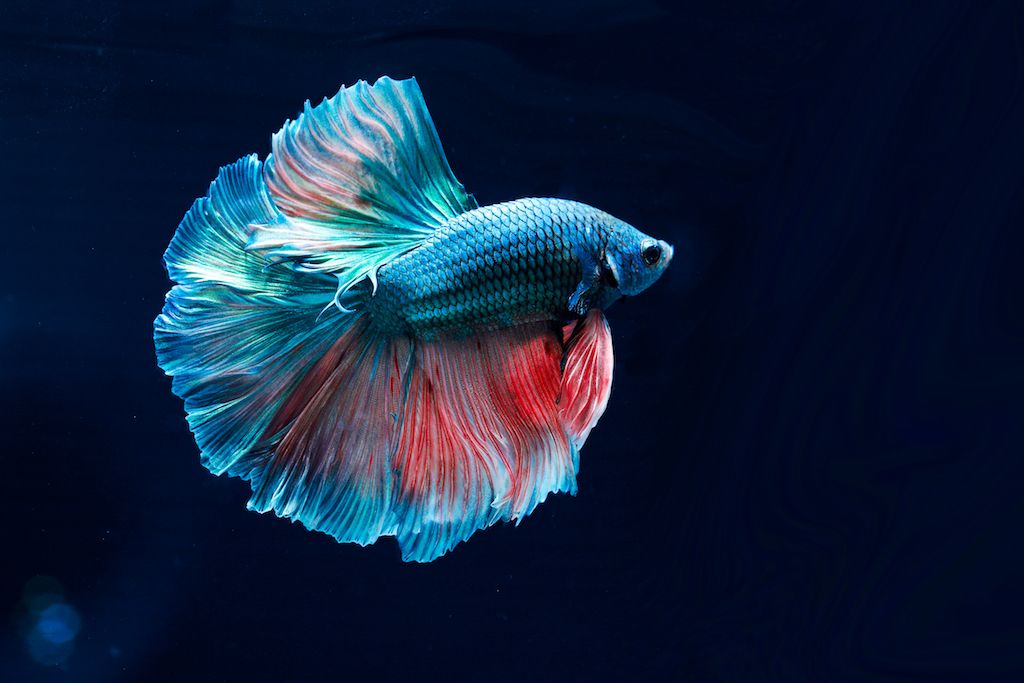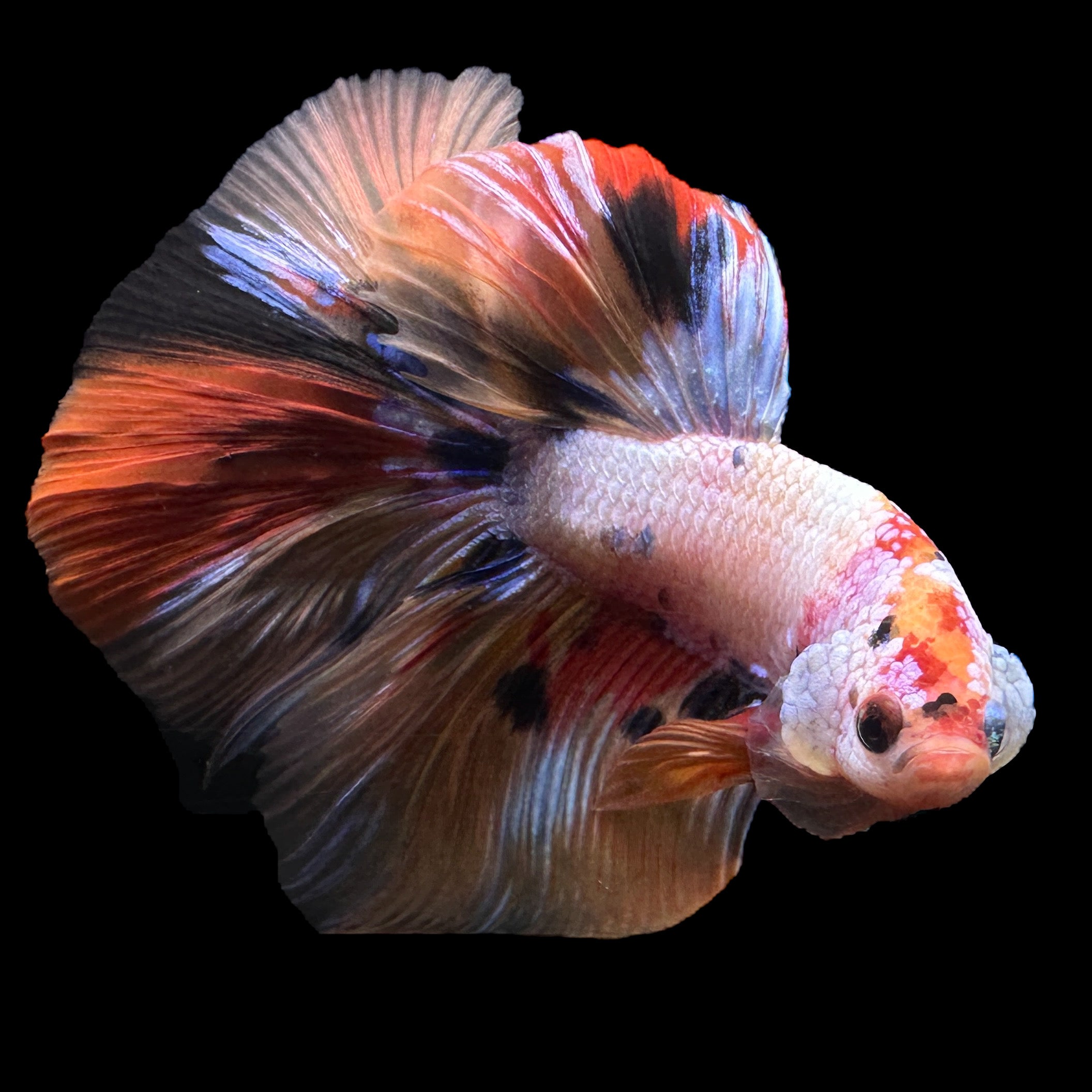How to Select the Right Betta Fish for Your Fish tank
Wiki Article
Reproducing Betta Fish: a Comprehensive Step-By-Step Overview to Successfully Raising Infant Bettas From Eggs to Adulthood
Breeding Betta fish is a meticulous endeavor that needs careful preparation and execution to make sure the effective development of fry from eggs to grow fish. As the male Betta carefully constructs a bubble nest and guards the priceless eggs, the subsequent stages of care and change demand interest to detail and knowledge of ideal techniques.
Selecting Breeding Pairs
When embarking on the journey of breeding Betta fish, picking the ideal breeding sets is critical to accomplishing desirable characteristics and a healthy family tree - betta fish. The very first step in this procedure is to identify the details qualities you want to enhance or maintain, such as color, fin kind, and physique. It is vital to choose genetically varied pairs to prevent inbreeding, which can lead to health and wellness issues and unwanted qualitiesReview prospective breeding prospects thoroughly. A healthy and balanced male Betta ought to show dynamic shades, an active behavior, and well-formed fins, while the lady ought to additionally display lively pigmentation and a rounded tummy, indicating preparedness for spawning. Observing the temperament of both fish is crucial, as hostile or overly timid people may not breed effectively.
Documents of lineage is similarly crucial. Maintaining records of the parent fish's ancestry can assist you track hereditary traits and prospective concerns. In addition, speak with trustworthy dog breeders or on the internet sources for advice on selecting compatible pairs. Eventually, spending time in the option process will considerably enhance the probability of creating solid, vibrant children that fulfill your reproduction goals (betta fish).

Preparing the Reproduction Tank
Creating an optimum reproduction environment is a vital step after choosing appropriate sets for Betta fish. The reproduction tank must be specifically developed to offer comfort and boost the natural reproduction behaviors of the fish. Start with a storage tank dimension of at the very least 10 gallons to guarantee appropriate space for both the male and women Bettas.Maintain a mild filtering system to maintain the water tidy while staying clear of solid currents that can stress the fish. Additionally, an air stone can be included in supply oxygenation without interfering with the water surface way too much.
Temperature guideline is crucial; aim for a secure series of 78-82 ° F(25-28 ° C) making use of a reliable heating unit. The pH level should be preserved in between 6.5 and 7.5, and normal water changes are needed to make sure high water high quality.
Incorporate floating plants or generating mops to develop concealing spots for the female, while also urging bubble nest structure by the male - betta fish. Lastly, make sure the storage tank is totally free from sharp decors and any type of possible threats, as the welfare of the fish need to always be focused on during this crucial phase of breeding.
The Breeding Process
Usually, the reproducing procedure for Betta fish involves a series of distinctive and visible behaviors that indicate preparedness for reproduction. The male Betta starts by developing a bubble nest at the water's surface, which serves as a website for the fertilized eggs. This nest is essential, as it offers a safe setting for the eggs up until they hatch.When the nest is established, the man will present courtship habits, such as flaring his fins and displaying vivid colors to bring in the woman. The woman, upon noticing the man's preparedness, will react by displaying upright red stripes along her body, indicating her receptiveness.
When the female approaches, the male takes part in a mating dance, frequently causing a welcome referred to as the "spawning." During this accept, the woman launches her eggs, which the male fertilizes right away. The fertilized eggs after that are up to the bubble nest, where the male carefully accumulates and returns them to the nest. Following this, the male assumes responsibility for securing the nest and guaranteeing the safety of the eggs up until they hatch out, normally within 24-36 hours. This phase is essential in the reproducing process, laying the structure for effective fry development.
Taking Care Of Betta Fry
Caring for Betta fry needs mindful attention to their atmosphere why not try this out and nourishment to make certain healthy growth and growth. After hatching out, Betta fry are incredibly little and susceptible, requiring a stable and tidy environment. Keeping a water temperature level between 78 ° F and 80 ° F is vital, as Betta fry thrive in cozy problems. In addition, make sure that the water is devoid of unsafe toxins; routine water changes of 10-20% are recommended to maintain ideal water quality.Feeding Betta fry is similarly essential. Feed them little quantities numerous times a day, being cautious not to overfeed, click for more which can lead to water top quality concerns.
Transitioning to Adult Bettas
As Betta fry mature, transitioning them to grown-up Bettas is an important phase that calls for cautious management of their atmosphere and social interactions. This process generally starts when the fry reach around 6 weeks of age, at which factor they can be progressively presented to a much more structured living atmosphere.To promote this shift, it is important to ensure that the water criteria-- such as temperature level, pH, and ammonia degrees-- are optimum and secure. Adult Betta fish prosper in warm water (around 78-80 ° F) with a pH of 6.5 to 7.5. Progressively adapt the fry to these conditions to reduce tension.
Social communications are another key element; male Bettas are infamously territorial and hostile. Consequently, it is recommended to different men into specific containers as they mature. Female Bettas can be housed together, however care ought to be required to keep an eye on for signs of aggression.
Furthermore, dietary adjustments must be made as the fry expand. Include premium pellets and live foods to sustain their development and wellness. By taking care of these aspects effectively, you can promote a try this web-site successful change to adulthood for your Betta fish.

Verdict
Successful breeding of Betta fish calls for mindful focus to information throughout the whole procedure, from picking genetically varied sets to providing optimal care for fry. Furthermore, a well balanced diet regimen and steady adaptation to adult environments are crucial for the development and growth of Betta fish.Report this wiki page